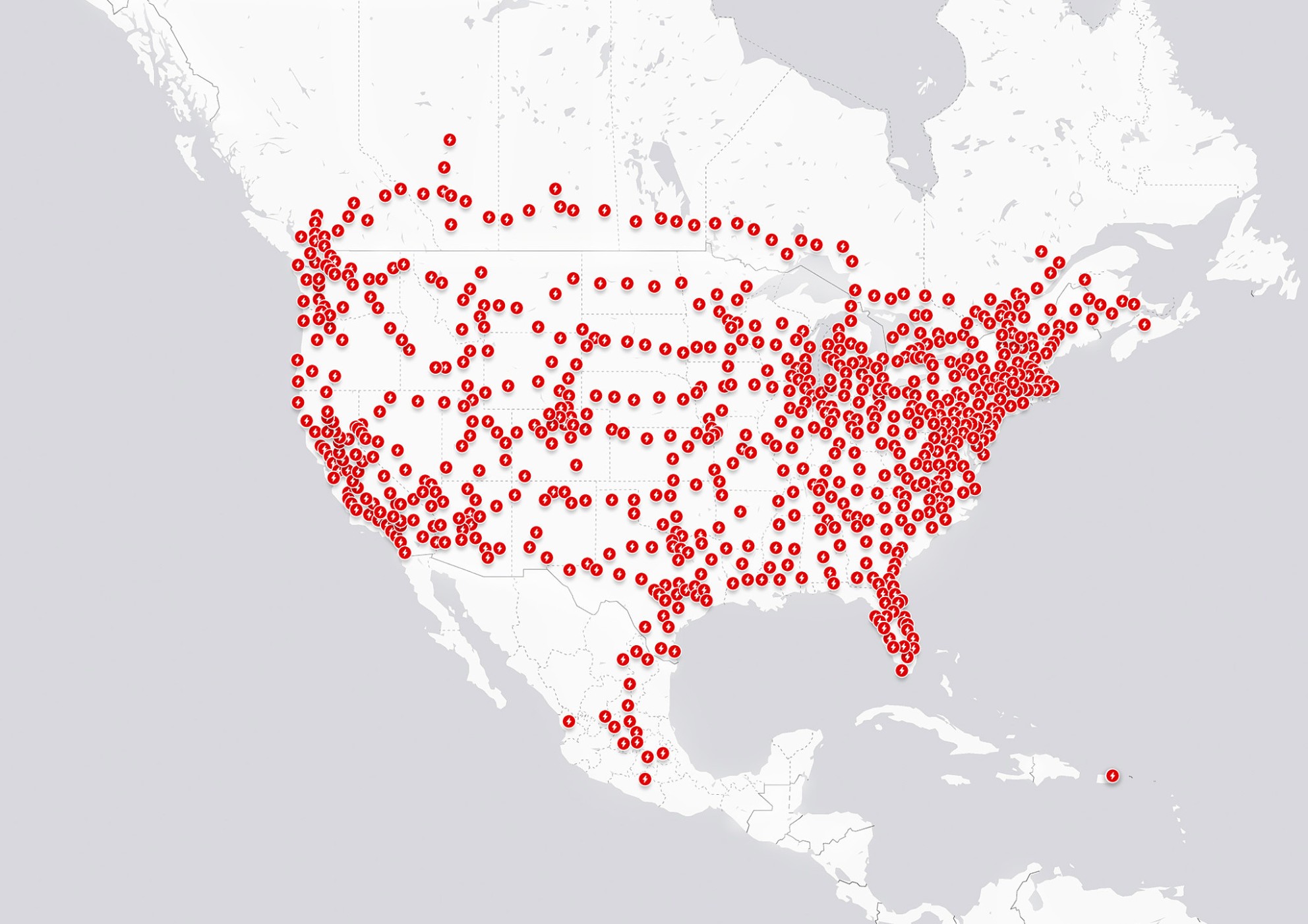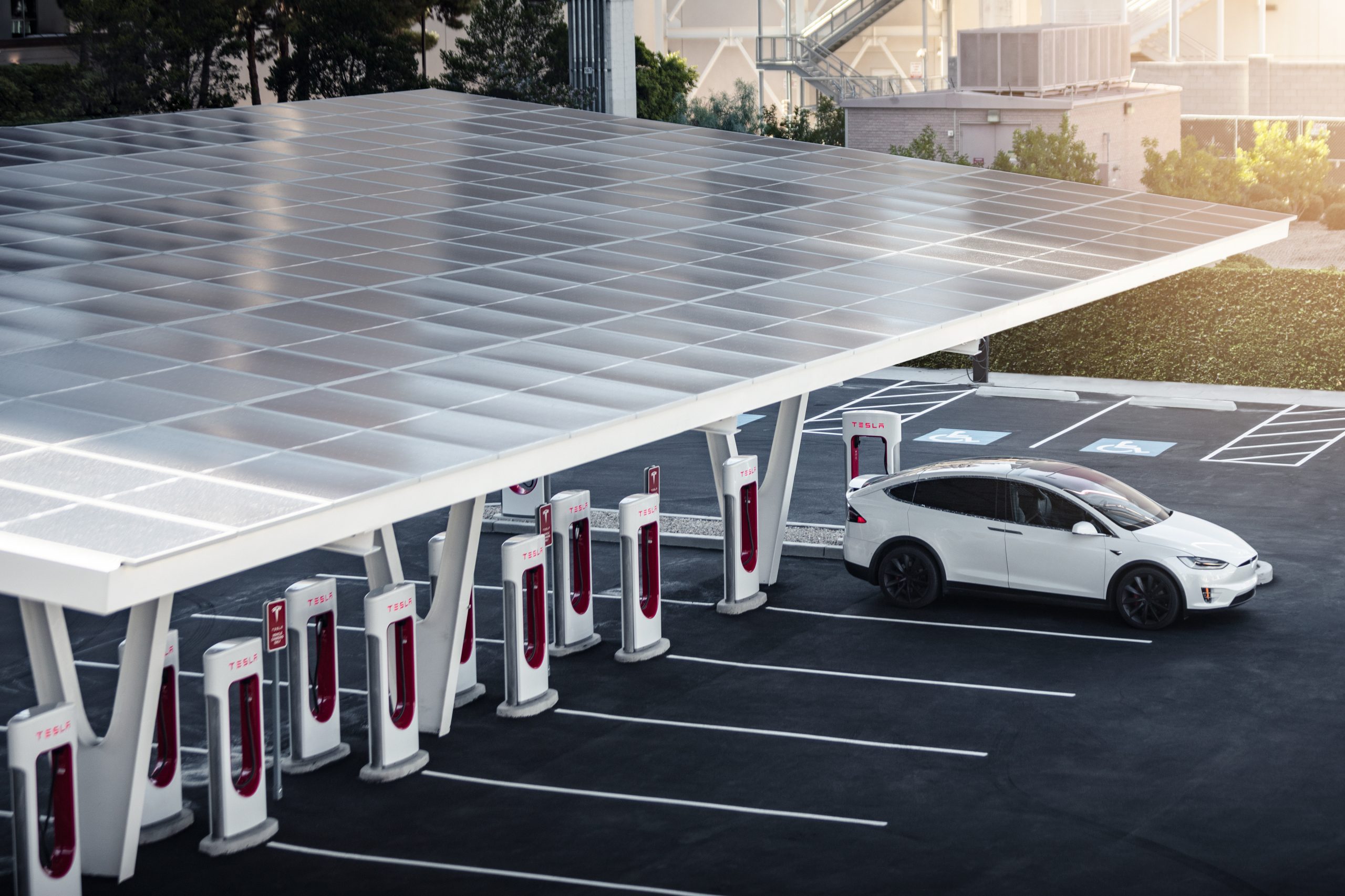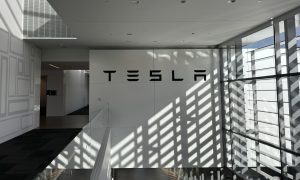Tesla announced this morning that it would open some of its United States Supercharger Network to competitors in an effort to not only make some of the $7.5 billion in funds from the Bipartisan Infrastructure Law available to the automaker, but also to make EV charging more available to consumers.
Tesla officially confirmed this morning that it would open select Superchargers in the U.S. to all EVs, an unprecedented move in the company’s history. In the past, Tesla has offered an exclusive strength to its owners by offering an expansive, robust, and dependable EV charging network. It has been arguably one of Tesla’s biggest advantages, and since CEO Elon Musk said in 2021 that the Supercharging Network would be opened to competitors that year, the automaker has reluctantly moved toward that goal.
EV charging to receive $7.5 billion in Bipartisan Infrastructure Deal: White House
Now, it has finally come to fruition.
This morning, The White House confirmed the plan with further details, stating:
“Tesla, for the first time, will open a portion of its U.S. Supercharger and Destination Charger network to non-Tesla EVs, making at least 7,500 chargers available for all EVs by the end of 2024. The open chargers will be distributed across the United States. They will include at least 3,500 new and existing 250 kW Superchargers along highway corridors to expand freedom of travel for all EVs, and Level 2 Destination Charging at locations like hotels and restaurants in urban and rural locations. All EV drivers will be able to access these stations using the Tesla app or website. Additionally, Tesla will more than double its full nationwide network of Superchargers, manufactured in Buffalo, New York.”
Last week, it was confirmed that Musk’s late January meeting with White House staff dealt with the potential opening of the Supercharger Network. Unsurprisingly, some Tesla fans were not super pleased with the idea. Superchargers are already relatively crowded, and the admittance of other non-Tesla brands to these chargers would only make matters worse. However, this is not always the case, as Superchargers in some areas of rural America, where EVs have yet to make a significant impact on the overall automotive market, are not always completely occupied.
While the locations that Tesla will choose are still up in the air, at least 7,500 piles of the U.S. Supercharger Network will be open to all EVs, and this is a win-win for everyone. Why?
Tesla owners will still have a distinct advantage
While 7,500 of the Superchargers will be open to other manufacturers by the end of next year, Tesla owners will still be the only ones to have the ability to utilize all of them.
This freedom gives prospective EV owners the ability to have a wide variety of options in terms of which company they will purchase from. However, Tesla will still have a significant advantage because it is the only manufacturer that will allow unlimited access to any Supercharger in the United States. It is important to emphasize this fact, because while other manufacturers will have access to some of the network, only Tesla owners will have access to all of it.
It eliminates a lot of the “There is not enough charging” argument
Even in 2023, as EVs continue to grab a more significant share of the total U.S. automotive market, we still hear that there are not enough chargers to justify an EV purchase.
While home charging is an option, those who rent or are apart of a strict Home Owners Association (HOA) may not have the ability to charge at their residence. This requires more public charging options to be available to those people, and the expansion of the charging network through Tesla’s decision to open select locations to all EVs only makes this outdated argument a lot less valid.
Even still, there are plenty of other companies out there that support the other manufactuers. Electrify America, ChargePoint, Blink, EVgo, and many others help electric vehicle owners get a charge before their drives.
Tesla’s decision shows its commitment to its mission
Tesla has always maintained that its goal is to “accelerate the transition to sustainable energy.” While the company is a business, and a for-profit business at that, Tesla has disrupted the entire automotive sector by showing EV options are sometimes more ideal than others. Because of the company’s influence on consumers, legacy automakers have been working on EVs for several years, and an influx of startups have come to light, hoping to be the next big thing.
Credit: Tesla
If Tesla was not actually committed to pushing more companies to build EVs, it likely would not make this move. As previously stated, many prospective car buyers are still under the impression that EVs are not feasible because of a lack of charging options. However, Tesla’s move to work toward expanding the Superchargers to other companies is further proof that it is more concerned with putting more EVs on the road, even if they’re not Teslas, than hoarding its robust charging infrastructure to itself.
This move is completely and entirely based on Tesla’s push to bring EVs to the mainstream, as if they were not already. However, the move is a further committment to the mentality that any EV is better than a combustion engine, and whatever the company can do to help another EV of any kind get sold is more than acceptable. But, don’t be fooled, Tesla still will take necessary steps to make its EVs more appealing than others, and that is evident with its continuous and relentless development of its vehicles, making them better and better as time goes on.
I’d love to hear from you! If you have any comments, concerns, or questions, please email me at joey@teslarati.com. You can also reach me on Twitter @KlenderJoey, or if you have news tips, you can email us at tips@teslarati.com.
News
Tesla begins Robotaxi certification push in Arizona: report
Tesla seems serious about expanding its Robotaxi service to several states in the coming months.

Tesla has initiated discussions with Arizona transportation regulators to certify its driverless Robotaxi service in the state, as per a recent report from Bloomberg News. The move follows Tesla’s launch of its Robotaxi pilot program in Austin, Texas, as well as CEO Elon Musk’s recent comments about the service’s expansion in the Bay Area.
The Arizona Department of Transportation confirmed to Bloomberg that Tesla has reached out to begin the certification process for autonomous ride-sharing operations in the state. While details remain limited, the outreach suggests that Tesla is serious about expanding its driverless Robotaxi service to several territories in the coming months.
The Arizona development comes as Tesla prepares to expand its service area in Austin this weekend, as per CEO Elon Musk in a post on X. Musk also stated that Tesla is targeting the San Francisco Bay Area as its next major market, with a potential launch “in a month or two,” pending regulatory approvals.
Tesla first launched its autonomous ride-hailing program on June 22 in Austin with a small fleet of Model Y vehicles, accompanied by a Tesla employee in the passenger seat to monitor safety. While still classified as a test, Musk has said the program will expand to about 1,000 vehicles in the coming months. Tesla will later upgrade its Robotaxi fleet with the Cyercab, a two-seater that is designed without a steering wheel.
Sightings of Cybercab castings around the Giga Texas complex suggests that Tesla may be ramping the initial trial production of the self-driving two-seater. Tesla, for its part, has noted in the past that volume production of the Cybercab is expected to start sometime next year.
In California, Tesla has already applied for a transportation charter-party carrier permit from the state’s Public Utilities Commission. The company is reportedly taking a phased approach to operating in California, with the Robotaxi service starting with pre-arranged rides for employees in vehicles with safety drivers.
News
Tesla sets November 6 date for 2025 Annual Shareholder Meeting
The automaker announced the date on Thursday in a Form 8-K.

Tesla has scheduled its 2025 annual shareholder meeting for November 6, addressing investor concerns that the company was nearing a legal deadline to hold the event.
The automaker announced the date on Thursday in a Form 8-K submitted to the United States Securities and Exchange Commission (SEC). The company also listed a new proposal submission deadline of July 31 for items to be included in the proxy statement.
Tesla’s announcement followed calls from a group of 27 shareholders, including the leaders of large public pension funds, which urged Tesla’s board to formally set the meeting date, as noted in a report from The Wall Street Journal.
The group noted that under Texas law, where Tesla is now incorporated, companies must hold annual meetings within 13 months of the last one if requested by shareholders. Tesla’s previous annual shareholder meeting was held on June 13, 2024, which placed the July 13 deadline in focus.
Tesla originally stated in its 2024 annual report that it would file its proxy statement by the end of April. However, an amended filing on April 30 indicated that the Board of Directors had not yet finalized a meeting date, at least at the time.
The April filing also confirmed that Tesla’s board had formed a special committee to evaluate certain matters related to CEO Elon Musk’s compensation plan. Musk’s CEO performance award remains at the center of a lengthy legal dispute in Delaware, Tesla’s former state of incorporation.
Due to the aftermath of Musk’s legal dispute about his compensation plan in Delaware, he has not been paid for his work at Tesla for several years. Musk, for his part, has noted that he is more concerned about his voting stake in Tesla than his actual salary.
At last year’s annual meeting, TSLA shareholders voted to reapprove Elon Musk’s compensation plan and ratified Tesla’s decision to relocate its legal domicile from Delaware to Texas.
Elon Musk
Grok coming to Tesla vehicles next week “at the latest:” Elon Musk
Grok’s rollout to Tesla vehicles is expected to begin next week at the latest.

Elon Musk announced on Thursday that Grok, the large language model developed by his startup xAI, will soon be available in Tesla vehicles. Grok’s rollout to Tesla vehicles is expected to begin next week at the latest, further deepening the ties between the two Elon Musk-led companies.
Tesla–xAI synergy
Musk confirmed the news on X shortly after livestreaming the release of Grok 4, xAI’s latest large language model. “Grok is coming to Tesla vehicles very soon. Next week at the latest,” Musk wrote in a post on social media platform X.
During the livestream, Musk and several members of the xAI team highlighted several upgrades to Grok 4’s voice capabilities and performance metrics, positioning the LLM as competitive with top-tier models from OpenAI and Google.
The in-vehicle integration of Grok marks a new chapter in Tesla’s AI development. While Tesla has long relied on in-house systems for autonomous driving and energy optimization, Grok’s integration would introduce conversational AI directly into its vehicles’ user experience. This integration could potentially improve customer interaction inside Tesla vehicles.
xAI and Tesla’s collaborative footprint
Grok’s upcoming rollout to Tesla vehicles adds to a growing business relationship between Tesla and xAI. Earlier this year, Tesla disclosed that it generated $198.3 million in revenue from commercial, consulting, and support agreements with xAI, as noted in a report from Bloomberg News. A large portion of that amount, however, came from the sale of Megapack energy storage systems to the artificial intelligence startup.
In July 2023, Musk polled X users about whether Tesla should invest $5 billion in xAI. While no formal investment has been made so far, 68% of poll participants voted yes, and Musk has since stated that the idea would be discussed with Tesla’s board.
-

 Elon Musk1 week ago
Elon Musk1 week agoTesla investors will be shocked by Jim Cramer’s latest assessment
-

 Elon Musk3 days ago
Elon Musk3 days agoElon Musk confirms Grok 4 launch on July 9 with livestream event
-

 Elon Musk15 hours ago
Elon Musk15 hours agoxAI launches Grok 4 with new $300/month SuperGrok Heavy subscription
-

 News7 days ago
News7 days agoTesla Model 3 ranks as the safest new car in Europe for 2025, per Euro NCAP tests
-

 Elon Musk2 weeks ago
Elon Musk2 weeks agoA Tesla just delivered itself to a customer autonomously, Elon Musk confirms
-

 Elon Musk1 week ago
Elon Musk1 week agoxAI’s Memphis data center receives air permit despite community criticism
-

 Elon Musk2 weeks ago
Elon Musk2 weeks agoTesla’s Omead Afshar, known as Elon Musk’s right-hand man, leaves company: reports
-

 News2 weeks ago
News2 weeks agoXiaomi CEO congratulates Tesla on first FSD delivery: “We have to continue learning!”

















